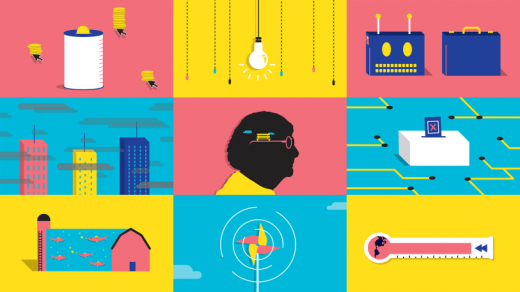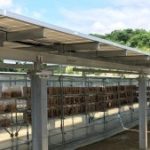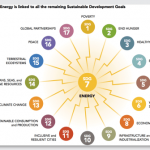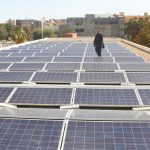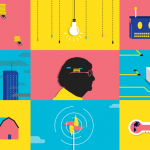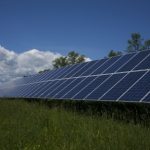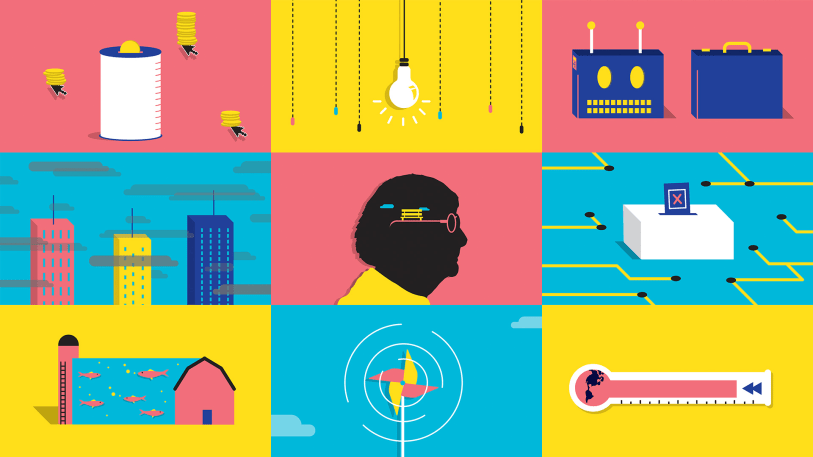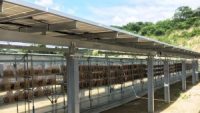The World Changing Ideas Of 2017
It’s hard to talk about moving the world forward when so much energy is being expended just trying to keep it from sliding backward. But while battles rage against the current administration’s anti-progress policies, the whole fight can’t just revolve around forestalling them. We must also create an alternate vision and be ready to implement it when the time comes. To that end, we’ve collected nine big ideas–from replacing factory farms with fish farms to creating a true global democracy–that can help us imagine the kind of world we can build once we elect leaders who will enact the revolutionary changes necessary to create a sustainable and more equitable future.
These stories should give you hope. There are people in the world right now who have come up with actionable ideas and are working hard on changing the path we’re on. Climate writer Paul Hawken’s new book offers a comprehensive–and not all that daunting–list of exactly what we need to do to stop carbon emissions. Companies are figuring out new ways to create circular economies and eliminate waste. Even Republicans are on board with renewable energy–as long as it’s the wind power that’s benefiting their states.
When we unveil our first-ever World Changing Idea Awards on March 20, you will learn about even more projects from around the world that are helping to lay this same groundwork for positive change.
The ideas are there. The fight for them was never easy; it’s going to be even harder now. After we emerge from what seems to be a low point, we have to work and hope to create the will to implement them.
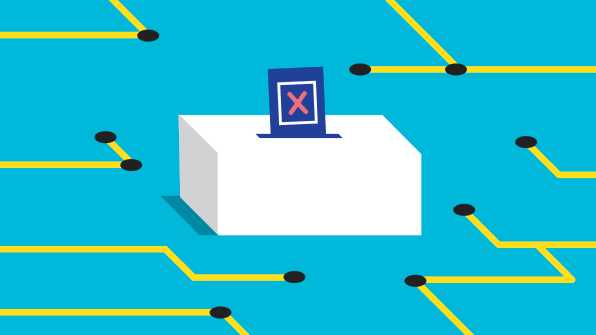
Can Technology Save Democracy?
Representative democracy may have run its course. It’s time for liquid democracy.
Rather than asking citizens to vote on every issue, what if we gave each person the power to vote or to appoint a delegate to vote for them? Unlike a typical representative, that delegate could be changed at any time depending on the issue. If you feel like you understand a particular issue, you can choose to vote on related proposals. For subjects you don’t know much about, you can appoint a friend or a known expert in the area. It solves the problem of education; no single person–including representatives in the current government–can be well-versed on everything.

Our Aging Population Can Be An Economic Powerhouse–If We Let It
By 2050, the number of people over 65 will more than double. Cities, communities, companies–and our entire culture–have some adjusting to do. If we can, the benefits will be enormous.
Like climate change, says Paul Irving, the chair of the Center for the Future of Aging at the Milken Institute, the graying of the U.S. population–and that of the whole world–is a phenomenon that has been a long time coming, but that we remain largely unprepared to confront. The fact that science has basically doubled life-spans in the past century and a half, Irving says, “is maybe the most extraordinary accomplishment in the history of mankind.” But unless we shift our attitudes and responses to aging, it will go from being a miracle to a crisis.

How Will The Rise Of Crowdfunding Reshape How We Give To Charity?
Giving is easier than ever, but what does it mean when our giving is directed toward the most viral story?
The crowdfunding sector generated $34 billion in free-flowing cash in 2015, and is on pace to do nearly 10 times that within the next decade. The result is a vast pool of money that’s fundamentally shifting who is funding charitable work and how that work gets done. Viral campaigns may reach more potential donors, but those givers often respond in an emotional as opposed to rational way: You’re paying to alleviate someone’s suffering, not the broader societal problem it represents. The result has left nonprofits scrambling for new ways to share their own community-minded messages within the medium.

To Save The American Dream, We Have To Change How We Think About Work
Here’s how we can build a new system of policies and safety nets to bring back opportunity to the American work force (it has nothing to do with walls, trade deals, or immigration).
We don’t know what the future of work looks like–whether it will be a wonderful upgrade on today’s conditions, or some kind of dystopia where wages are meager, robots are everywhere, and inequality is rampant. But we can be fairly sure the policies we have today aren’t the ones we’re going to need. If we’re going to cope with the age of advanced automation, and manage the general shift to “flexibility” and worker independence, we need to rethink how we support work going forward.

Replacing Farms With Fish Farms: The Odd Solution To Both Hunger And Climate Change
Imagine a world where polluting, resource-intensive cow, pig, and chicken farms are replaced with giant tanks of fast-growing salmon. It might be a strange view of agriculture, but a potential huge shift in how we feed the planet.
Imagine a world where our primary protein source wasn’t environmentally damaging factory farms, but these eco-friendly, land-based fish tanks. Instead of being served antibiotic- and hormone-laden portions of pork, beef, or chicken, people would have access to fresh fillets from a process that obviates the need to dose away sickness, or artificially spur growth rates.
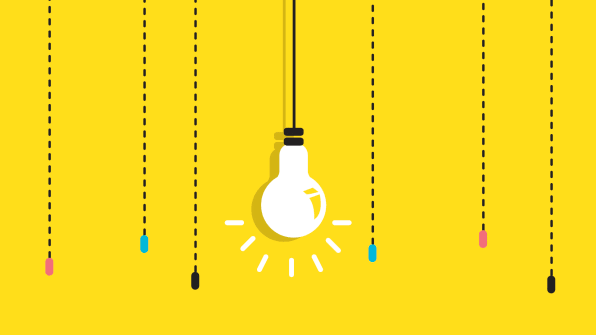
How Netflix-ication Can Deliver A Waste-Free Circular Economy
When products turn into services, the business model isn’t about selling you the next widget. It’s about longevity, repairability, and sustainability.
The product-as-service model is one of the key ways we might move from a predominantly “take-make-dispose” type of economy (that is, take raw materials, make something, and throw it away when it no longer works, or is no longer fashionable) to an economy that’s more circular or regenerative. Companies will retain ownership of their products, maintaining them and remanufacturing them, extending life cycles and reducing the world’s gargantuan waste pile. On a planet of finite resources, and in age of increased expectations around experience, services are likely to make increasing sense in category after category.

The 100 Things We Need To Do To Reverse Global Warming
Paul Hawken’s new book Drawdown claims to have made a definitive list of the most effective global strategies for lowering our emissions. Don’t despair: They’re all totally achievable.
A new book might serve as a blueprint for what comes next if the U.S. government (and the global community) begins to aggressively focus on altering the climate future. Drawdown: The Most Comprehensive Plan Ever Proposed to Reverse Global Warming, analyzes the details of what it might actually take not only to stop global warming but potentially begin to reverse it. To create it, a team of researchers spent two years examining data on the 100 most substantive ways to reduce or sequester emissions, and doing the math on how much those solutions could achieve over the next three decades.

Cleaning Urban Air Requires Radical Solutions
The mayors of London, Paris, and Barcelona are all trying to make their cities’ air more breathable by fighting the most obvious culprit: drivers.
Despite global progress made on lowering emissions, cities from London to Beijing to São Paulo have atmospheres that are so polluted that residents are often warned not to leave their homes unless they have to. To combat the problem, three European cities–London, Paris, and Barcelona–and their mayors are pursuing radical policies to cut traffic, often to the deep chagrin of the cities’ drivers, but at great benefit to their citizens’ lungs.

Why Isn’t Wind As Sexy As Solar?
Solar startups get all the hype, but strong bipartisan support and new forays offshore have positioned wind to be a major player in the U.S. energy landscape–even under a climate-change-denying administration.
Suspended between Trump’s disdain and Silicon Valley’s innovation-fueled enthusiasm for solar, wind could be seen as stranded in something of an impasse. But Mark Barteau, the director of the University of Michigan’s Energy Institute, says that’s not the case. According to the U.S. Department of Energy, if the wind industry continues to see the steady growth it has experience over the last decade, it could provide over a third of the U.S.’s energy by 2050. More so than the environmental argument in favor of this development, which, under the current administration, is not faring well, the economics of the wind industry are driving this trend, Barteau says. It’s hard to argue with an industry that is economically competitive with other forms of energy, and provides massive opportunity for onshore manufacturing and job creation. And both because of its large-capacity potential and exciting new offshore developments, wind appears poised to keep renewables growing throughout the next four years.
(41)

